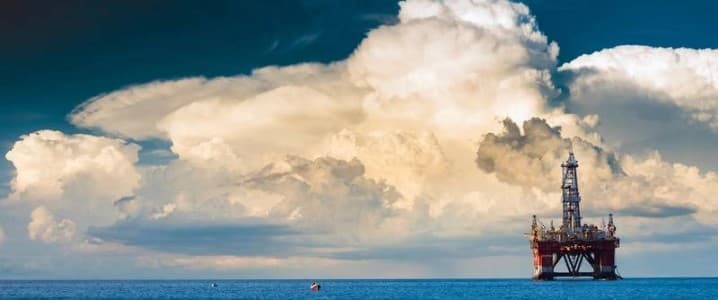Energy security and affordability have trumped fears of stranded assets in recent years, prompting the world’s biggest international oil and gas firms to shift focus back to exploration after years of trying to develop clean energy solutions.
Big Oil has scaled back investments in renewables, at least those majors that tried to become key green energy providers, as poor returns from clean energy and demand, cost, and regulatory challenges further diminished the appeal of returns on investments in solar and wind.
Back to the Basics
European majors BP and Shell reversed their pledges from the early 2020s to reduce oil and gas production by the end of the decade. This year marked the return to boosting oil and gas production, and with it—increased exploration efforts in key basins and promising new frontiers.
Guyana, Suriname, Namibia, and Brazil have seen major oil discoveries in recent years.
The U.S. supermajors, Exxon and Chevron, are betting on Guyana’s huge discovered resources in the Stabroek offshore block. Exxon operates the block, to which Chevron has just gained access thanks to its multi-billion-dollar acquisition of the block’s minority partner, U.S. Hess Corporation.
France’s TotalEnergies is developing resources offshore Guyana’s neighbor Suriname and looks to progress a development offshore Namibia in southwestern Africa.
Shell also had some exploration success offshore Namibia, and both Shell and TotalEnergies plan drilling offshore South Africa in the same Orange Basin extending from Namibian waters, where the two majors have made oil discoveries. The South African ventures face environmental challenges and court-mandated halts to exploration efforts, for now.
BP’s Blockbuster Discovery Offshore Brazil
BP, the last of Europe’s Big Oil to switch back to the core business of raising oil and gas production, struck a major oil and gas discovery in Brazil’s prolific offshore Santos Basin, the supermajor’s biggest in 25 years.
BP’s exploration well in the deepwater Bumerangue block found an estimated 500-meter (1,640 ft) gross hydrocarbon column in a high-quality pre-salt carbonate reservoir with an areal extent of greater than 300 square kilometers (116 square miles), the UK-based oil and gas major said in August.
“This is another success in what has been an exceptional year so far for our exploration team, underscoring our commitment to growing our upstream,” said Gordon Birrell, BP’s executive vice president for Production & Operations.
Related: Fed Makes First Quarter-Point Rate Cut, Signals More to Come
Bumerangue is BP’s tenth oil and/or gas discovery so far this year, including one in the Gulf of Mexico, as the company pursues increasing its oil and gas production following the strategy reset early this year.
“Brazil is an important country for bp, and our ambition is to explore the potential of establishing a material and advantaged production hub in the country,” Birrell said.
BP has said it is increasing its investment in upstream oil and gas to $10 billion per year while slashing spending on clean energy by more than $5 billion a year.
In the upstream, BP will aim for 10 new major projects to start up by the end of 2027, and a further 8–10 projects by the end of 2030. Production is also expected to grow to 2.3–2.5 million barrels of oil equivalent per day (boed) in 2030, with capacity to increase to 2035.
The Brazilian discovery could be a big boost to BP’s ambitions in its core business and potentially a pivotal moment for the supermajor, which is considered by analysts to be the weakest link among Big Oil’s top five firms.
Estimates based on similar Brazilian pre-salt fields suggest that Bumerangue could likely have recoverable resources of about 2.0-2.5 billion barrels of oil equivalent (boe), according to Claudio Steuer of the Oxford Institute for Energy Studies (OIES).
At a conservative long-term price of about $75 per barrel, this implies a gross lifetime production value of over $165 billion, Steuer says.
With first oil projected for 2031-2033, the potential plateau production of Bumerangue could be as high as 400,000 barrels per day (bpd), which “will secure decades of cash flow to restructure BP and realign its energy transition strategy,” Steuer noted.
The renewed exploration efforts from Big Oil are just the beginning, as the biggest companies expect to put more resources into the search for more oil and gas to meet the growing global demand.
“We went through a significant reset, I would say, of our exploration department, capability, the funnel ,because the hard truth is while we have had some good progress in certain areas, it hasn’t delivered what we had wanted,” Shell’s chief executive, Wael Sawan, told analysts on the Q2 earnings call at the end of July.
Shell will continue to invest in exploration where it has established track records, like the Gulf of Mexico, Malaysia, Oman, and in areas like Namibia, added Sawan, who has said that reducing global oil and gas production would be “dangerous and irresponsible”.
TotalEnergies “reloaded the exploration portfolio by acquiring exploration permits in the U.S. Gulf, in Malaysia, in Indonesia and Algeria” in the second quarter, CEO Patrick Pouyanné said on the earnings call.
In Chevron’s goal to have a balanced and diversified portfolio, “exploration needs to play an important role and we are making some changes to our program and our approach,” Chevron’s CEO Mike Wirth said during the Q2 earnings call.
Exxon, for its part, while focused on the Permian and Guyana, is looking at opportunities elsewhere, and has deals in the works for exploration in Libya and a return to exploration offshore Trinidad and Tobago in blocks northwest of Guyana’s Stabroek.
By Tsvetana Paraskova for Oilprice.com
More Top Reads From Oilprice.com
Read this article on OilPrice.com


